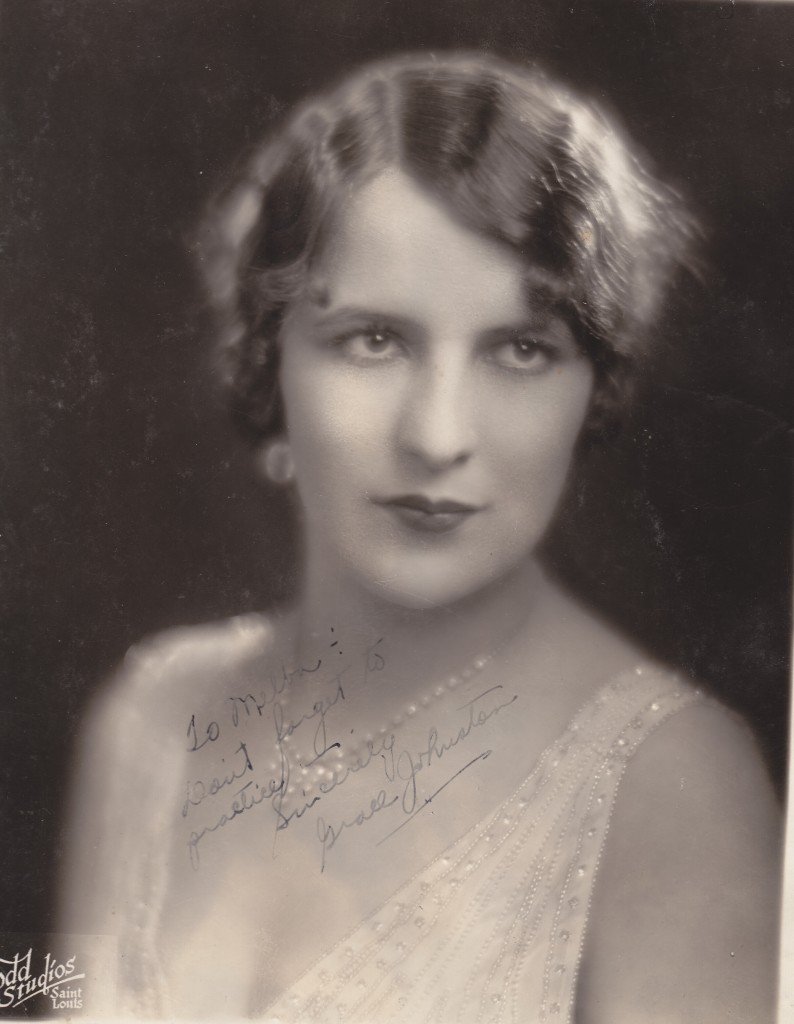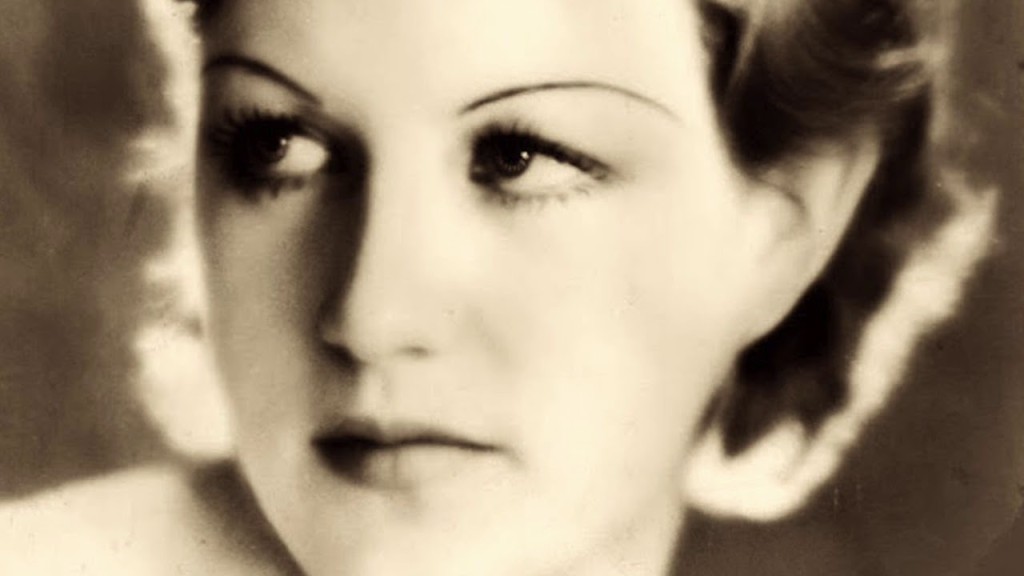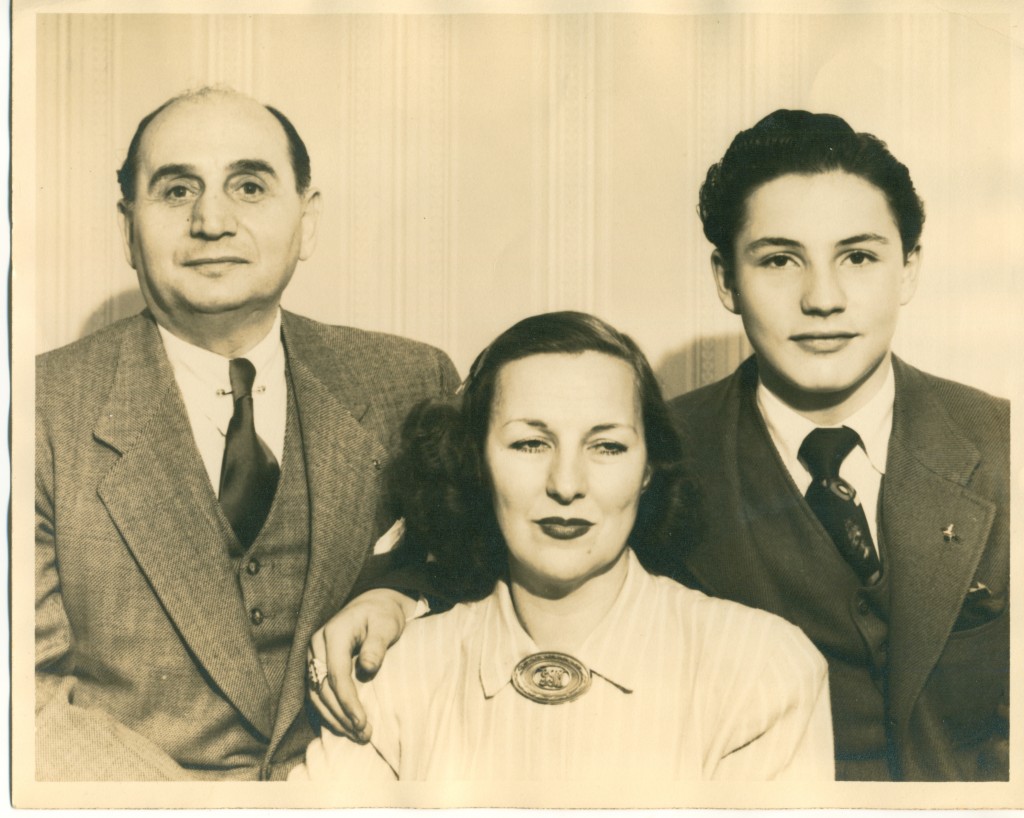Grace Johnston could sing and swing a tune with a drive and delivery that almost transcended description.
And she really WAS from Dixie! She was born in Crowley (Acadia Parish). Louisiana. on December 17, 1903 (the very day of the Wright Brothers historic flight in Kitty Hawk, North Carolina). She was raised in New Orleans.
Hearing her recording “Roll On, Mississippi, Roll On” was my first exposure to the dynamic Grace Johnston, courtesy of the late Kenny Klemann, a renowned New York-based collector who specialized in “Personalities.” Two other titles that Kenny owned were “You’re Driving Me Crazy” and “Them There Eyes.” I was knocked out by Johnston’s talent and eagerly began to collect her entire recorded legacy which spanned the years 1928 to 1932.

Tommy Dorsey, Jimmy Dorsey and Benny Goodman accompanied her on recording dates, which explains why she was included under her own name in Brian Rust’s Jazz Records discography. It seemed too good to be true when Warner Home Video issued a two-DVD set of “Vitaphone Varieties” in 2012 which contained the only film appearance of Grace Johnston: a seven-minute 1929 Vitaphone short entitled Grace Johnston and the Indiana Five. Quoting Ron Hutchinson’s notes:
The discovery of the long missing Vitaphone soundtrack disk for this short in the late 1990s was truly cause for celebration. This film marks the only talkie appearance of the legendary jazz musicians who comprised The Indiana Five. The group recorded extensively on 78s in the twenties, and today their records are highly collectible. The group broke up within months of the making of this Vitaphone. Singer Grace Johnston bookends the group’s performance of “Clarinet Marmalade” and has a powerful and assured delivery.
Filmed in Brooklyn, the short begins with Grace Johnston’s “Bashful Baby” with the Indiana Five playing behind a scrim. The scrim lifts and the Indiana Five gives out with “Clarinet Marmalade.” The scrim comes down again and Johnston ends the seven-minute film with “Glad Rag Doll.”
Pianist and musicologist Peter Mintun posted the film on YouTube, so prepare yourself for her “powerful and assured delivery.”
With a common name that was frequently misspelled J-O-H-N-S-O-N, I did not think it would be possible to discover further details about Grace Johnston. There was a listing in Variety obituaries with the correct spelling, but it was not the correct Grace Johnston. Thanks to my friendship with fellow 1920s historian, discographer, and ancestry.com expert David Garrick of Atlanta (who also claims December 17 as his natal anniversary), we were able to contact Grace Johnston’s grandson, Robbie Mason, who supplied Grace’s 1986 obituary information.
As a New Orleans native and Boswell Sisters researcher, I was able to use my New Orleans Public Library card to research the New Orleans newspapers of the 1920s and 1930s, using BOTH spellings of Grace’s surname. Grace Johnston knew Martha, Connie, and Vet Boswell, as both acts frequently sang at social events for the Young Men’s Gymnastic Club (YMGC) in New Orleans, where their talent was specially championed by the Promotive Director, Bill Coker. Grace Johnston was also a frequent contestant in bathing revues at this time.
Two other acts that also performed at the YMGC during the 1920s were the Preisser Sisters (Cherry Blossom and June) and Margaret Viegas. Margaret Viegas became nationally famous in the early 1930s as vocalist Loretta Lee via network radio broadcasts with the George Hall Hotel Taft Orchestra. The YMGC changed its name to the New Orleans Athletic Club in 1929 and is still operating at 222 North Rampart Street.
Grace Johnston’s family is listed in the 1920 census in New Orleans, taken on January 7. Both of her parents were natives of Louisiana. Her father, Herbert Louis Johnston, was a steamboat captain. Grace lived with her entire family (father, mother Mattie Lou Ewing Johnston, and older brothers Bert and Irvin) at 722 Soniat Street.
The 1923 New Orleans City directory lists Grace Johnston residing at 1810 South Rampart Street as an employee of the Western Union Telegraph Company. That year Grace received her first review for an appearance at a Police Minstrel Show staged at the Dauphine Theater in the French Quarter. The New Orleans Item (January 28, 1923) printed a large studio photo of her with the following caption:
Miss Grace Johnston Sings Several Jazz Numbers Including “He May Be Your Man Now, But He Comes To See Me Sometimes” And She Sings It – Oh, Boy!
Her career snowballed in the Crescent City after her first review in Variety, published March 9, 1927, from the Silver Slipper, a night club located at 426 Bourbon St.:
There’s a coon shouter at the Silver Slipper, by name Grace Johnston. She bears down heavy as a whoop-de-doo songstress, who might do better by applying the soft pedal at times. She’s tall and healthy, and shakes a mighty mean hip!
The New Orleans States noted (March 18, 1927):
Grace Johnson (sic), who does her stuff with the jazz songs, singing “I Got a Papa in New Orleans and One in Birmingham”. . .
Vaudeville beckoned and she repeated her hometown success at the Ansonia Café in Chicago in October and November of 1927. Returning to New Orleans early the next year, she took on an additional role at the YMGC as a comedic Mistress of Ceremonies, a combination that was frequently utilized during the remainder of her career. She appeared in a vaudeville revue staged at the Saenger theater on Canal Street with Art Landry and the Saenger Stage Band, receiving this notice from the New Orleans States (April 2, 1928)
. . . and Grace Johnson (sic), a New Orleans girl brought down the house with her singing. “I’m Playing Hide and Go Seek” was one number and she gave “I’m Going to Dance With the Guy That Brung Me” and had to repeat the chorus several times. She made a great hit.
In a separate section of that issue of the States, columnist Mel Washburn noted her improvement and readiness for bookings on the Radio-Keith-Orpheum (RKO) and Publix vaudeville circuits. The enthusiastic reviews continued in vaudeville, prompting occasional recordings on the Brunswick, Melotone and Panachord labels.
In May of 1931 Grace Johnston was booked to appear at the London Palladium. Accompanying her on the voyage were her mother and Tyler Mason, a popular blackface comedian who had also been booked at the Palladium that month. Grace and Tyler initially met in New Orleans during a vaudeville engagement. After playing several theaters in London and Scotland (billed as “America’s Aristocrat of Syncopation”) she sailed back on the Ile de France. She married Tyler Mason (ne Jacob Koplewitz) on July 19, 1931 in Greenwich. Conn.
Appearing in a short-lived musical production entitled Free For All, staged at the Manhattan theater in New York, opening on September 8, 1931 and starring Jack Haley, her one song, “When Your Boy Becomes a Man,” was singled out for praise by several reviewers. The number was recorded for Brunswick with accompaniment by Jacques Renard & His Orchestra on September 15, 1931, but the side was withdrawn before release.
Tyler Mason and Grace Johnston had one son, Harvey Brent Mason, who was born in 1932 in New York. Grace Johnston continued appearing in vaudeville and theaters across the country (Salt Lake City, Camden, N.J., Utica, N.Y., New Orleans, Paterson, N.J.) usually booked as a Mistress of Ceremonies and vocalist. Her last documented appearance was in Miami at the Olympia in June of 1948.

From Variety (June 16, 1948): “Grace Johnston emcees capably in own spot offers some broad comedies in gags and song.”
The Masons moved to Liberty, Texas. Tyler Mason opened a booking agency in Houston in 1939 with clients in Houston and New York. Tyler Mason passed away on February 25, 1959.
Grace married Otho Osborn in the early 1960s. Her modest obituary was published in a rural Louisiana daily newspaper, the Sabine Index, under the name of Mrs. Grace Osborn, listing her grandchildren as survivors. “Dixie’s Duchess of Syncopation” died on September 22, 1986 at the age of 83 in Many (Sabine Parish), Louisiana.
In the powerful, driving and rhythmic Grace Johnston tradition, I conclude this tribute with an excerpt from the New Orleans States of July 8, 1935. In his column “The Periscope,” F. Edward Hebert (pronounced A-bear) noted the following:
GRACE JOHNSTON, who made her first public appearance in a bathing revue started at the old Young Men’s Gymnastic Club by BILL COKER, is now understudying to ETHEL MERMAN in “Anything Goes” . . . She will also appear in a few movie shorts very very soon . . .
I don’t have any further information concerning the alleged movie shorts . . . However, via her recorded legacy and the Vitaphone movie short, I continue to be fascinated by the sublime entertainment provided by Dixie’s Duchess of Syncopation.
♫ ♫ ♫ ♫ ♫
P.S. F. Edward Herbert began his career as a journalist and holds a record for serving 18 consecutive terms (from 1941 to 1977) as Louisiana’s longest-serving Democratic House of Representatives Congressional Representative.
Thanks to Robbie Mason, Grace’s grandson, for providing photographs.
David W. McCain, a native of New Orleans, parlayed an interest in the female singers of the past into a lifetime of scholarship. He befriended and interviewed Teddy Grace and his fascination with the artistry of the Boswell Sisters prompted him to meet Vet Boswell in 1977. He collaborated with Vet’s granddaughter, Kyla Titus, to publish the sisters’ biography The Boswell Legacy in 2014. A documentary on the Boswell Sisters, Close Harmony, has recently been completed.






















